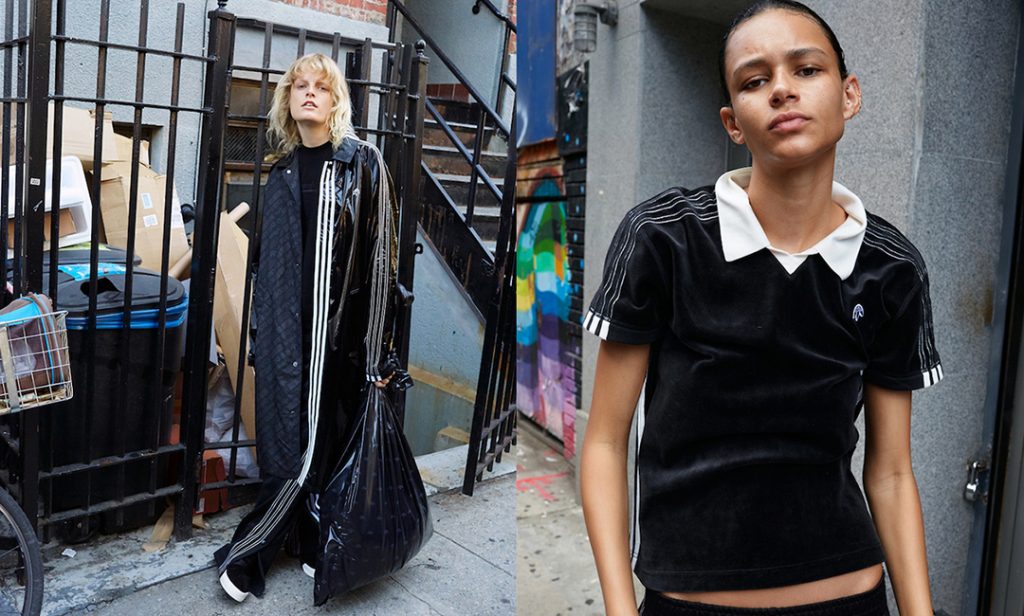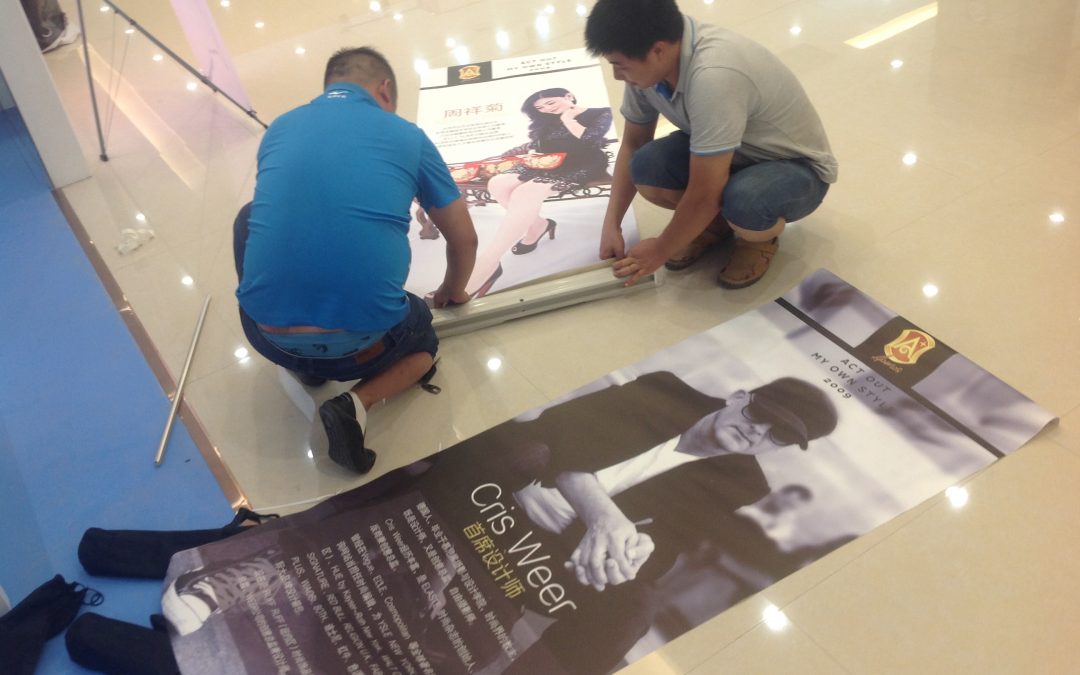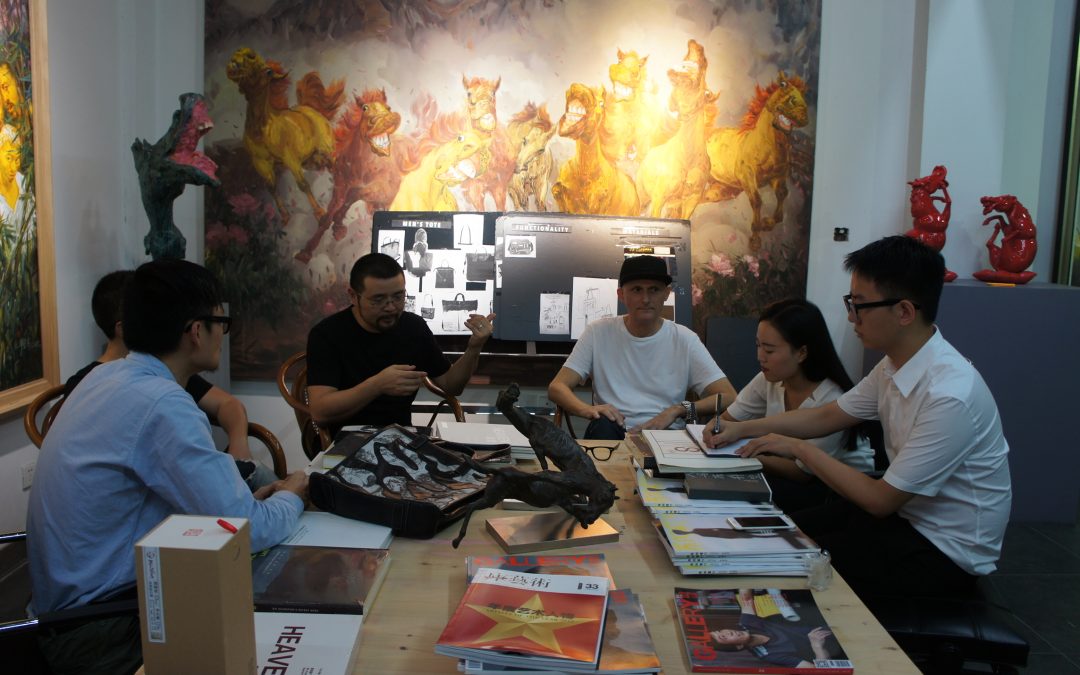
Athletic Gear Has Influenced Everything
Alexander Wang’s new Adidas collaboration for spring 2017. (Kate Warren for The Washington Post)
NEW YORK — The track pants, T-shirts and jackets are basic black, which doesn’t sound all that interesting, but the color manages to give it all a sleeker look so that it is at once retro and kitschy but also modern. Alexander Wang designed the collection in a collaboration with Adidas Originals, which he unveiled on the runway as part of his spring 2017 presentation.
It may be hard to believe, but once a time sweatpants and sweatshirts were just throwaway garments meant for, well, sweating. Then along came hip hop and Run-DMC and Juicy Couture, and sweatsuits became a fashion thing, a cultural thing, a rarified thing — not because of how they looked but because of how much they cost.
The advertising campaign for the collection features models on the streets of New York looking particularly grumpy, perhaps because several of them appear to be dragging overstuffed garbage bags — or perhaps designer gym bags that just look like Hefty bags. Whatever they are, they don’t look fun to haul around.
Getting one’s hands on this collection will be a complicated endeavor as it will initially be sold via pop-up trucks that will be driving around in New York on Sunday, and in Tokyo and London on Sept. 17. Knowing exactly where those trucks will be or when involves following either Wang or Adidas Originals on Instagram or Snapchat or calling 917-325-3342. For those with more patience, the collection will be available in the usual online and bricks-and-mortar way in the spring.
The unveiling of the 84-piece unisex collection, which also included footwear, was celebrated after the runway show with an elaborate video and giant music festival that suddenly appeared as the catwalks’ backdrop gave way to reveal food trucks, a performance stage, a fully functional 7-Eleven, Slurpee machines, a McDonald’s and plenty of booze.
That is a lot of hoopla to sell track pants, pullovers and sneakers, which speaks to the dominance of street and athletic style over pretty much everything else in the fashion universe. Sacai’s Chitose Abe has created a collection with Nike. So has the brand Undercover. Stella McCartney has a long relationship with Adidas. Athletic gear has influenced everything.
Still, when these sportswear companies step into the fashion ring, they often can’t resist bringing in a celebrity to add sizzle, whether it’s Rihanna at Puma or another Adidas co-conspirator, Kanye West. It’s easy money. But it’s really unnecessary.
In many ways, Wang is a celebrity, but he’s mostly a designer — one sensitive to the relationship between fashion and street style. And the funny thing about Wang’s take on Adidas is that he didn’t move the garments that far from their origins. What would be the point?
High fashion isn’t welcoming lowly streetwear into its rarefied world by giving it a luxury makeover. The balance long ago shifted. Fashion is coming down from its high perch to marvel at the allure of a sweatshirt.

Floored

Horses Horses Horses Horses Horses Horses Horses
Design Meeting with 邱光平 in Chengdu.
Do you know how to pony like bony maroney
Do you know how to twist, well it goes like this, it
goes like this
Baby mash potato, do the alligator, do the alligator
And you twist the twister like your baby sister
I want your baby sister, give me your baby sister, dig
your baby sister
Rise up on her knees, do the sweet pea, do the sweet
pee pee,
Roll down on her back, got to lose control, got to lose
control,
Got to lose control and then you take control,
Then you’re rolled down on your back and you like it
like that,
Like it like that, like it like that, like it like
that,
Then you do the watusi, yeah do the watusi
Fashion Communication
Fashion Communication Traction Verticals
Given that the first inflection point is unpredictable, it makes sense to consider all traction “verticals” in the pursuit of your product/market fit. Here’s a list I hope to make exhaustive over time (by updating this post).Note: this list has no particular order.
Traditional PR. Justin.tv gained an early loyal following from getting written up in national newspapers. Justin Kan tells the story in my interview with him.
Non-traditional PR, e.g. Publicity Stunts. Josh Kopelman had a town renamed half.com, which got him on a lot of national TV shows. He tells the story here.
Search Engine Marketing (SEM). At NextTag, Mark Cramer bought mortgage ads off of Google and found a way to monetize them (for more than he paid). He explains the tactic in my second interview with him.
Non-SEM Online Ads. DuckDuckGo has gotten some success out of reddit ads. There’s also lots of other platforms, e.g. Facebook, StumbleUpon, MySpace. Then there are thousands of smaller sites that will take your ads directly.
Search Engine Optimization (SEO). At Bingo Card Creator, Patrick McKenzie
operates a collection of sites that get hundreds of thousands of people each year interested in his offerings coming in for free from organic search (mainly through Google). He walks through in detail how it all works in my interview with him.
Business Development (BizDev). Kayak secured an early partnership deal with AOL. Paul English tells the story in my interview with him.
Target Market Blogs. Reddit gained early users after Paul Graham mentioned them in one of his essays. Alexis Ohanian talks about it my interview with him.
Your Blog. SEOMoz eventually took off after years of tireless blogging. Rand Fishkin tells us about it in my interview with him.
Community Building. At Wikipedia, Jimmy Wales spent a lot of initial effort courting early editors and building a community around them. He recalls the history in my interview with him.
Viral. Posterous took off through posting and sharing. Garry Tan recounts the series of events in my interview with him.
Trade Shows. Steve Welch gained momentum for Mitos through innovative marketing at industry conferences. He tells us how it happened in my interview with him.
Speaking Engagements, e.g. Conferences. Eric Ries told me (after our interview) that his blog really got traction after he started doing speaking engagements.
Open Source. Zimbra took hold by making their product open source. Statish Dharmaraj opines on the strategy in my interview with him. You could consider this a special case of the next vertical.
Existing Platforms. SurfCanyon has gotten 1.5M downloads of their Firefox add-on.
Mark Cramer explains how in my interview with him. And of course don’t forget iPhone/iPad, Twitter, Facebook, LinkedIn, Ning, etc.
Sales. Steve Barsh kick-started his company through endless cold-calling and networking, which he talks about in my interview with him. In my interview with Todd Vollmer, Todd lays out a pretty comprehensive approach to startup selling.
Creating a Popular Event. I think the recent Startup Lessons Learned conference by Eric Ries and Charles Hudson is a good example of this strategy.
Here are other verticals I know about though don’t have great examples for yet:
Off-line Ads. I’ve heard infomercials can work wonders for the right products. And of course there is TV, radio, billboards, magazines, newspapers, etc.
Buying Smaller Sites. I’ve heard axod bought a site to jump-start Mibbit. Can I interview you about it?
Basically everyone I’ve interviewed has gotten traction from a different vertical. Yes, partially that was by my design (in the picking of interviewees). However, it is clear that usually they didn’t start out thinking they would get traction from that particular vertical. So I think it makes sense to systematically examine each of them and brainstorm how they might work for your startup.
